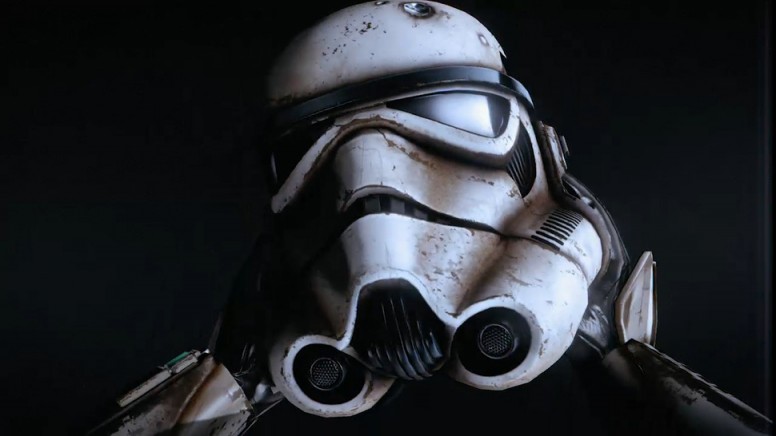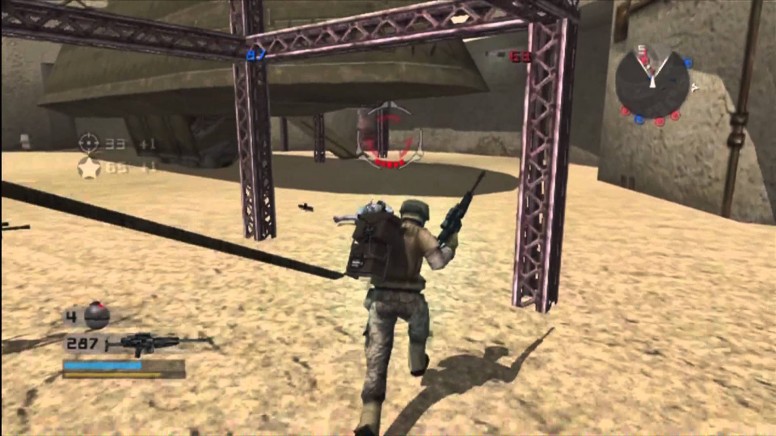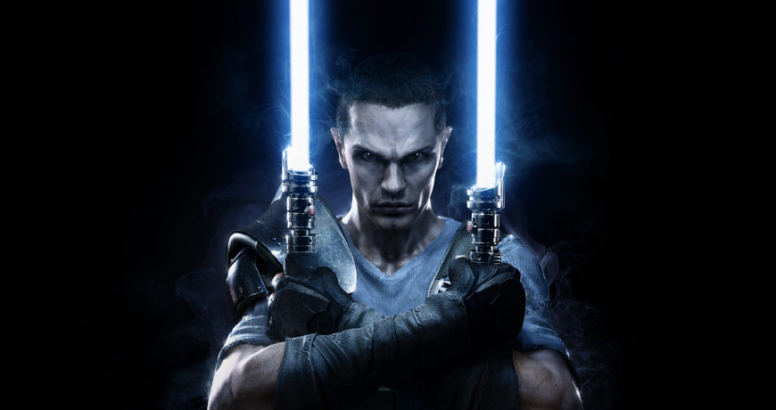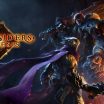An Empire Fallen – The LucasArts Games You’ll Never Play

A Day Long Remembered…..
I don’t think anyone expected it, or even thought it possible to be honest, that LucasArts and the Star Wars name would one day fall under the monopolistic-minded reach of Disney. When George Lucas first conceived the company in 1982 (originally called Lucasfilm Games) to further expand the Star Wars experience into the interactive computer and video game market, everyone expected it to thrive well into the next century. But by the early years of the 21st, the quality of product was beginning to suffer. For every Battlefront hit, there was a Kinect Star Wars experience to sour the gains. By April 2004, Jim Ward, Vice President of marketing, online and global distributions at Lucasfilm, was appointed president of LucasArts. Almost immediately he implemented a five year goal to restructure and rebuild the company and, according to him, “put the ‘Lucas’ back into LucasArts. To have that same ‘pixie dust’ feeling when people see that logo that they did in the ’90’s. For them to think, ‘If I pick up this game, I know it’s going to be kick ass; I know it’s going to be the highest quality and the most creative thing out there.'”
Under Ward’s tenure, LucasArts pushed boldly forward, releasing several critically acclaimed titles like Star Wars Battlefront, Battlefront II, Republic Commando, Mercenaries: Playground of Destruction, and The Force Unleashed. But under the outward facade of placidity, all was not well in the kingdom that George built. Numerous former LucasArts employees, all who wished to remain anonymous, recall the hostility and extreme working conditions during their time with the company. “Jim Ward’s leadership style was not for everybody,” recalls one employee. “He was a challenging person to get to understand. He came from the film side. His objective was nothing less than changing the way the entire [gaming] industry worked by the sheer force of his own will. He was quoted several times basically saying, ‘I don’t understand why video games can be late. When [Industrial Light and Magic] works on Harry Potter, they don’t have a choice to be late. The movie’s going to open. The effects have to be done. You don’t get it. There’s no choice. So I don’t understand why we get in this situation where video games can be late'”
Another LucasArts employee remembers the turmoil that accompanied the studio’s release of Battlefront II. “It was originally being designed as a multiplayer-only game. It remained that way for most of its development cycle,” the employee recalls. “New people who came in after the game was in development basically said, ‘No, we’re not going to make money money off a multiplayer-only game. You have to put in a single-player campaign.’ Pandemic (the developer behind the product) screamed bloody murder, and said that it couldn’t be done [before release]. But Ward said that they had to figure it out. Battlefront II‘s producer had a breakdown bringing the game in, but the team made their deadlines and the game sold like crazy. It was probably a bad lesson for Ward to learn, because LucasArts was successful at doing something that everyone thought was impossible.”
The breakdown of unity and business coherency soon began to unravel the teams that were under a constant state of flux. New employees were being shuffled in constantly to shore up teams that lost employees who either resigned or quit outright, and in the process concepts and game designs for expanded universe characters began to suffer. During the company’s “core meetings” between the top brass and the development teams at the LucasArts campus, that breakdown became apparent. These meetings, according to one employee, became known as the “Infamous ‘Jim Ward losing his sh*t meetings.’ If you were sitting at the table, it meant you were in the firing line for any number of crazy business questions…. It would be the type of thing where a team would show a [game] build and [Ward] would say something like, ‘Alright [Quality Assurance], based on the playthroughs what are we rating this right now?’
“And it would be a 22-year old Q.A. person who showed up late and was sitting at the table that answered. He would say something like ’84,’ and Jim would say ‘That’s not good enough. What gets this game to a 90?’ Q.A. would nervously say, ‘Oh, adding online co-op,’ which is not at all in the schedule or budget, and Jim would say, ‘Let’s look into that.’ The dev team wouldn’t know how to respond to that. That addition wasn’t in the books. We became this forum for democratization, but nobody really had any idea of what was going on. At the same time, nobody wanted to tell the truth, because they didn’t want Jim to lose it and fire a water bottle across the room.”
Sometimes. even the very person you’re working for can be a detriment to the design processes. During the company’s development of 2008’s Fracture with Day 1 Studios, despite being deep into its design cycle, several executives made the decision to turn this first person experience into a third-person vanilla shooter. “We were told to ‘pull the camera out.’ We had to make a character model, create animations, plot the levels differently, stream it differently. It was a nightmare for everyone involved.” But even then that wasn’t enough. Because George Lucas himself had his own ideas, his own monkey wrench, to throw in before the game’s release. “In one viewing of Fracture,” an employee recalls, “Lucas said it looked really good, but he didn’t like [the original] Mason Brigg’s name. We were like, ‘What do you mean George?’ He responded to the effect of, ‘It doesn’t really fit. When he jumps on stuff, he moves really fast. I like B.J. Dart.’
“So everybody’s like, No, he’s gotta be f**king with us.’ He’s absolutely not. So when something like that happened – in the middle of the campaign, mind you – we have to go back through the entire naming convention again… from scratch.” Coincidentally, the game’s protagonist was eventually renamed Jet Brody (a play on Jett, the first name of Lucas’ son). Upon release, Electronic Gaming Monthly described Brody as “perhaps the single most derivative character in the modern age of gaming, a direct combination of the heroes from Resistance/Mass Effect/Gears of War/Too Human. If the narrative weren’t so staunchly heavy-handed, I’d put my money on Brody being a literal parody of shooter-genre character.” Needless to say, the game sold poorly.
This wouldn’t be the last time George’s influence would alter or even delay a game’s design. During the company’s development of 2008’s Star Wars: The Force Unleashed, the team approached Lucas with the express desire to have permission to give the game’s protagonist a proper Sith title. “The team threw a Hail Mary at George, saying the game would have more credibility if the apprentice had a ‘Darth’ title,” an employee said. However, it was rumored that Lucas had little love for the Starkiller/Galen Malek creation. And while he agreed that the moniker would make sense to the Star Wars universe George, according to the employee, quickly quashed the idea. “He threw out ‘Darth Icky’ and ‘Darth Insanious.’ There was a pregnant pause in the room after that. People waited for George to say ‘just kidding,’ but it never comes, and he just moved on to another point.”
Even non-Star Wars franchises under the LucasArts care were not immune to the in-fighting. Alongside Force Unleashed development was the idea to bring Steven Spielberg’s Indiana Jones to modern video gaming. But the reality of splitting teams, at the time rather small, just didn’t seem plausible. “It was an impossible goal,” an employee recalls. “We saw that there was no way that this was going to happen, but the company was very energized, they started hiring like crazy.” However, most of the hires were being put into prioritizing Force Unleashed as the company’s next release, leaving behind a skeletal crew to try and make some form of progress on the Indy title. But it wasn’t until a relatively new developer introduced their own globe-trotting adventurer that things came to a crushing halt.
On November 2007, Naughty Dog and Sony Computer Entertainment released their Uncharted title to critical and commercial success. When the guys and gals at LucasArts got a copy of the game, the future didn’t look so bright for Indy. “I have never seen a more f**king forlorn group of guys,” recalls one of the employees. “Because [Uncharted] was exactly the game the team was trying to make. Indiana Jones had a cistern level – same as in Uncharted. It had similar jungle environments too, but one of the big things that [Indiana was] attempting were those run-for-your-life moments, where something happens, the camera turns, [and] you have a different perspective that shows the danger behind you, and then you have to control that character out of it – which is exactly what Uncharted did. [Naughty Dog] had effectively out-Indy’ed Indy.”






![[PROTOTYPE]](http://www.enthusiacs.com/wp-content/uploads/2020/03/title-104x104.jpg)




I just rewatched the excellent “Empire of Dreams” documentary about the making of the original trilogy. Back when Lucas had such huge creative energy, coupled with people around him who were actually willing to tell him when an idea was bad or needed work, you really saw some amazing stuff. From the re-releases on, the results of treating his “vision” as beyond question or criticism have been mixed or downright terrible. Such a shame to see ego and cowardice stifle a great franchise. An even greater shame that the videogame adaptations seemed to suffer most of all.
It’s a common failing or so I’ve heard, I think Peter Molyneux suffers from it as well because we should all remember what was promised with fable and what was delivered (not that fable was a bad game).
Sometimes you need someone to nail your feet to the ground and remind you that you are not a god/infallible. Otherwise you just end up wasting money and not getting anything done.